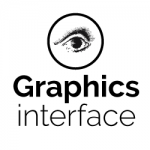The 2021 CHCCS/SCDHM Achievement Award of the Canadian Human-Computer Communications Society is presented to Dr. Tamara Munzner for her many contributions to the field of visualization. Her work bridges the gap between the HCI and graphics communities.
Tamara is a professor at the University of British Columbia, which she joined in 2002 after two years as a research scientist at the Compaq Systems Research Center. She earned her PhD from Stanford in 2000, working with Pat Hanrahan. She was a technical staff member at the University of Minnesota Geometry Center from 1991 to 1995. She was co-designer of the interactive 3D visualization system Geomview, which directly supported non-Euclidean geometries. She was co-creator of two animations that brought concepts from geometric topology to general audiences: “The Shape of Space” is about spaces that are finite but have no boundaries, and “Outside In” explores turning a sphere inside out. These videos were shown at the SIGGRAPH Electronic Theater, featured on the cover of Scientific American, and won awards at NICOGRAPH, the London Effects and Animation Festival, Prix Pixel Imagina, and Prix Ars Electronica.
Tamara’s research interests include the development, evaluation, and characterization of visualization systems and techniques from both problem-driven and technique-driven perspectives. In problem-driven work, known as design studies, the focus is on designing systems to solve specific needs for a target group of real-world users. Tamara has pioneered the development of design study methodology, reflecting on work within a broad range of application domains, including genomics, evolutionary biology, fisheries management, web log analysis, e-commerce, and journalism. Her technique-driven interests include graph drawing and dimensionality reduction, with an emphasis on scalable algorithms. Her evaluation interests include both controlled experiments in a laboratory setting and qualitative studies in the field. She has contributed substantially to the theoretical foundations of visualization design and the visualization research process. Her widely used book Visualization Analysis and Design provides a systematic, comprehensive framework for thinking about visualization in terms of principles and design choices. It features a unified approach encompassing information visualization techniques for the abstract data of tables and networks, scientific visualization techniques for spatial data, and visual analytics techniques for interweaving data transformation and analysis with interactive visual exploration.
Tamara has published over 80 papers, including 21 at IEEE InfoVis, and others at many venues including TVCG, VAST, EuroVis, SciVis, SIGGRAPH, CHI, Graphics Interface, PacificVis, Graph Drawing, Information Visualization, and CG&A. Her h-index is 49, her work has amassed over 10,000 citations, and she has given over 200 talks. She has supervised over 40 students and postdocs, who have gone on to positions including Google, Tableau Research, Electronic Arts, AeroInfo, and professorships at Zurich, Northeastern, Stuttgart, Utah, Victoria, and Beuth. She and her group have released over 25 software packages as open source. She has consulted for or collaborated with many companies including Agilent, AT&T Labs, Google, Microsoft, Mobify, Silicon Graphics, Tableau, Uber, and early-stage startups. She serves on the advisory boards for the Data Visualization Society and Data Literacy LLC. She is the co-editor of the AK Peters Visualization Series with CRC Press / Routledge.
Tamara has helped to organize InfoVis in roles ranging from webmaster to inaugural posters chair to papers chair to steering committee chair. She has served as chair of the VIS Executive Committee, chair of the VIS Restructuring Committee (reVISe), and a member of the VGTC Executive Committee. She was papers chair for EuroVis and a founding member of the BioVis Steering Committee. She received the IEEE VGTC Visualization Technical Achievement Award in 2015 and is a founding member of the VIS Academy. Her 2009 paper on the nested model of visualization design and validation earned the InfoVis 10-year Test of Time award in 2019.





